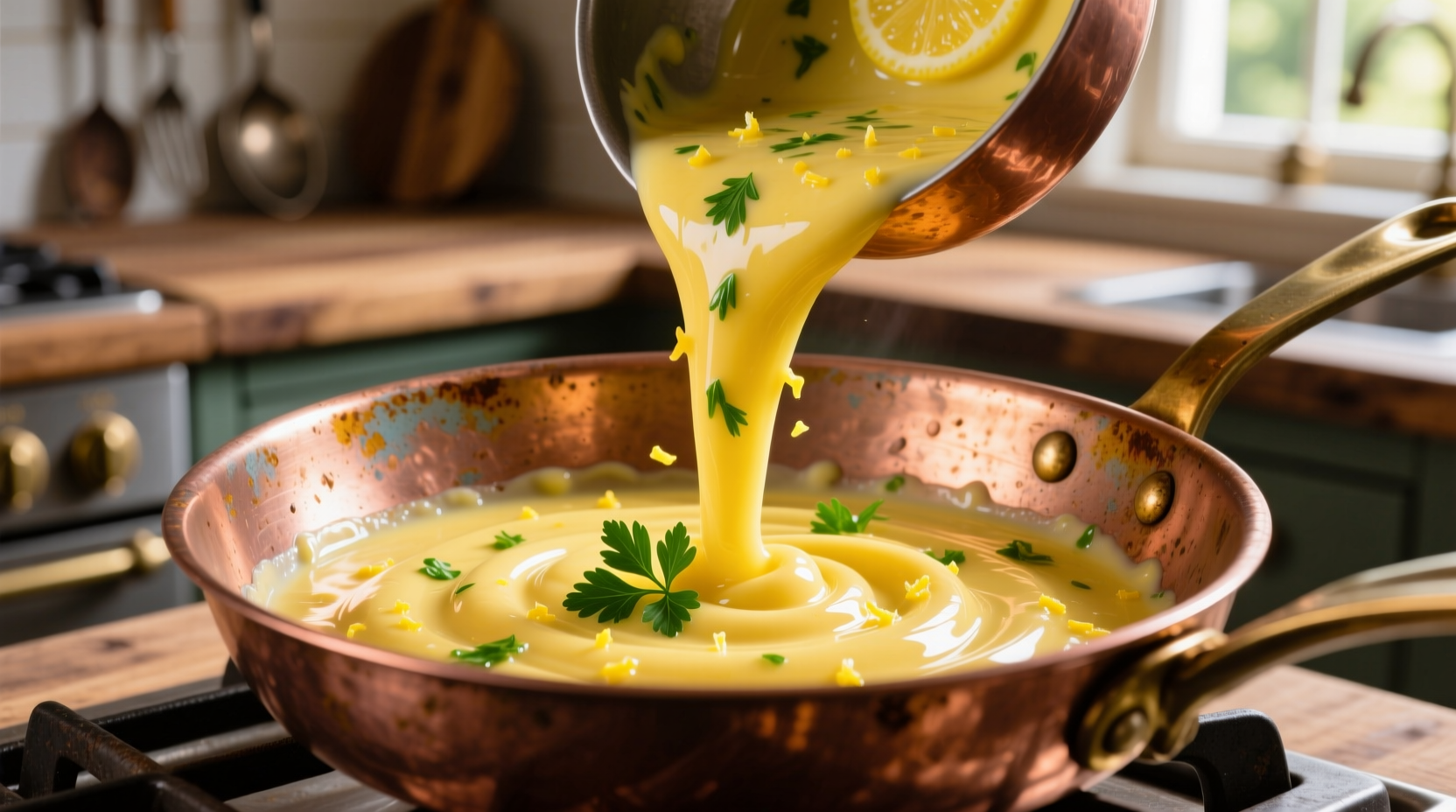As a French-trained chef with decades of experience perfecting European sauce techniques, I've discovered that the perfect lemon butter parsley sauce balances three critical elements: the acidity of fresh lemon, the richness of quality butter, and the herbal freshness of flat-leaf parsley. This guide reveals the precise ratios, temperature control methods, and timing that transform basic ingredients into a restaurant-quality sauce every time.
Why This Sauce Works: The Science Behind the Flavor
The magic of lemon butter parsley sauce lies in its emulsion chemistry. When properly executed, the lemon juice's citric acid interacts with the butterfat through a process called montage (mounting), creating a stable emulsion that neither separates nor curdles. According to culinary research from Le Cordon Bleu's technical archives, the ideal temperature range for this emulsion is 110-120°F (43-49°C) - hot enough to melt the butter but cool enough to prevent separation.

Essential Ingredients Breakdown
Quality ingredients make the difference between a good sauce and an exceptional one. Here's what you need to know about each component:
| Ingredient | Recommended Type | Why It Matters | Substitution Options |
|---|---|---|---|
| Lemon juice | Freshly squeezed Meyer lemon | Meyer lemons have lower acidity and floral notes | Regular lemon juice + 1/4 tsp honey |
| Butter | Unsalted European-style (82% fat) | Higher fat content creates stable emulsion | Ghee (clarified butter) |
| Parsley | Flat-leaf (Italian) parsley | More robust flavor than curly parsley | Chervil or chives (50% substitution) |
| Liquid base | White wine or fish stock | Adds depth without overpowering | Vegetable broth or water |
Step-by-Step Preparation Guide
Follow this professional technique for perfect results every time:
- Reduce the liquid base: In a cold saucepan, combine 1/4 cup liquid base with 2 tbsp lemon juice. Bring to simmer over medium heat and reduce by half (about 3-4 minutes).
- Temper the butter: Remove from heat and let cool for 2 minutes. Gradually whisk in 1/2 cup cold butter, one tablespoon at a time, until fully incorporated.
- Add finishing elements: Stir in 2 tbsp finely chopped parsley, 1 minced garlic clove, and salt to taste.
- Final temperature check: The sauce should coat the back of a spoon (110-120°F). If too thick, add 1 tsp warm water.
When to Use (and Avoid) This Sauce
Understanding context boundaries ensures perfect application:
- Ideal for: Delicate fish (sole, trout, halibut), chicken breasts, asparagus, new potatoes, and steamed vegetables
- Avoid with: Strongly flavored meats (lamb, duck), spicy dishes, or acidic preparations that would compete with the sauce
- Temperature sensitivity: Never boil the finished sauce - high heat causes immediate separation
- Timing: Prepare immediately before serving; this sauce doesn't store well beyond 2 hours
Evolution of Lemon Butter Sauce Through Culinary History
This classic preparation has evolved significantly since its French origins:
- 17th century: Early versions appeared in François Pierre La Varenne's Le Cuisinier François (1651) as "beurre maître d'hôtel" - a simple mix of melted butter, lemon, and parsley served with roasted meats
- 19th century: Auguste Escoffier refined the technique in Le Guide Culinaire (1903), emphasizing the importance of emulsion temperature and ingredient quality
- Mid-20th century: Julia Child popularized the sauce in American kitchens through her television demonstrations, though she often substituted American butter (80% fat) for European varieties
- Present day: Modern chefs like Alain Ducasse have introduced variations with added elements like capers or shallots while maintaining the essential emulsion principles
Common Mistakes and How to Fix Them
Even experienced cooks encounter these issues:
- Separated sauce: Caused by excessive heat or adding butter too quickly. Fix: Whisk in 1-2 tsp cold water while slowly incorporating remaining butter
- Too acidic: Overpowering lemon flavor. Fix: Balance with 1/2 tsp honey or additional butter
- Bitter parsley: Using stems or dried parsley. Fix: Always use fresh flat-leaf parsley leaves only, chopped just before adding
- Grainy texture: Butter added when base is too cold. Fix: Ensure reduction has cooled slightly but remains warm (100-110°F)
Perfect Pairings: What to Serve With Lemon Butter Parsley Sauce
This versatile sauce complements numerous dishes when applied correctly:
- Seafood: Drizzle over pan-seared fish during the last minute of cooking - the residual heat creates perfect emulsion without curdling
- Poultry: Spoon over chicken breasts after resting to preserve delicate texture
- Vegetables: Toss with blanched asparagus or green beans while still warm for maximum flavor absorption
- Pasta: Use as a light coating for delicate pasta dishes like linguine with clams
Storage and Reheating Guidelines
While best served fresh, you can store leftovers properly:
- Cool to room temperature within 2 hours of preparation
- Store in airtight container in refrigerator for up to 2 days
- To reheat: Place in double boiler over barely simmering water, whisking constantly until warmed through
- Never microwave - this destroys the emulsion
- Always check USDA food safety guidelines for proper storage temperatures when handling dairy-based sauces











 浙公网安备
33010002000092号
浙公网安备
33010002000092号 浙B2-20120091-4
浙B2-20120091-4